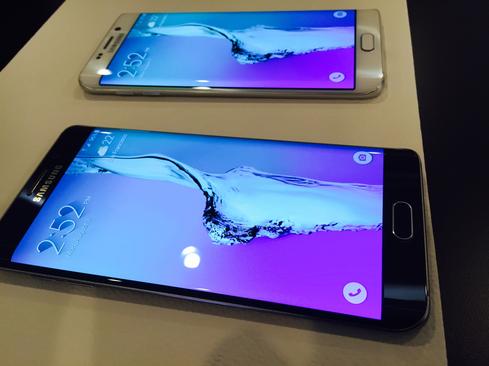Polyera Wove Band Boasts Flexible DisplayPolyera Wove Band Boasts Flexible Display
Polyera, a largely unknown startup, is making a splash with its Wove Band, a wearable device with a flexible display that can be wrapped around a user's wrist.


Samsung Galaxy Note 5, S6 Edge+: Side By Side
Samsung Galaxy Note 5, S6 Edge+: Side By Side (Click image for larger view and slideshow.)
Flexible electronics specialist Polyera announced the debut of its first commercially available product, the Wove Band, on Monday. It's a flexible display that can wrap around a wrist or be used flat.
The platform on which the Wove is based, called Digital Fabric Technology, is the result of 10 years of development, spanning science, engineering, and design, according to the company's August 17 release.
On a website devoted to the device, which leads users to various social media pages, the company notes submissions for free Wove 0.1 prototypes open in September, asking curious parties to check back in 42 days.
Polyera executives say the company uses proprietary electronic materials to enable displays that provide robust flexibility. They claim these can be manufactured in traditional display fabrication plants with minimal capital investment.
Another component used in the Wove Band is E Ink, a flexible electronic ink film made of plastic-based thin-film transistors (TFTs). These TFTs make the end product lighter and thinner than products using glass-based TFTs.
The bi-stable nature of E Ink's electronic ink makes it so displays do not consume energy while holding a static image. This approach enables the Wove to have a display which is both large and always-on, while consuming less power than smartwatches with smaller displays.
At a basic level, a display is made up of two parts: The first is a frontplane, which is the layer that makes the image you see. The second is a backplane, which is an array of TFTs that control which pixels in the frontplane turn on and off.
With Polyera Flexible TFTs, the backplane can be made flexible, making the full display flexible, in contrast to traditional display technologies where the backplane has previously been a constraint.
"Most attempts to make flexible displays have relied on depositing traditional electronic materials, such as silicon, on plastic substrates," the company explains on its website. "This approach allows the creation of products with displays in a fixed curve, but the brittleness of these electronics layers makes them unsuitable for products which are dynamically flexible. Polyera's proprietary materials, by contrast, are flexible and robust, enabling the creation of products with true, dynamically flexible displays."
[Read about LG making thinner displays for laptops.]
The company is also working on a variety of flexible electronics components, such as flexible OLED displays, flexible sensors and flexible logic circuits.
Polyera is led by CEO Phil Inagaki, who founded the company after graduating from Princeton University with a degree in physics, and Antonio Facchetti, co-founder and chief scientific officer, who holds a Ph.D. in chemistry from the State University of Milan.
The company is far from the only player in the flexible display space. Consumer electronics heavyweights LG and Apple have also made investments in the technology. LG is spending nearly a billion dollars to build a flexible OLED plant in Korea.
In 2014, Apple was awarded a patent for a flexible display as part of a series of 57 newly granted patents doled out by the US Patent and Trademark Office.
About the Author
You May Also Like






